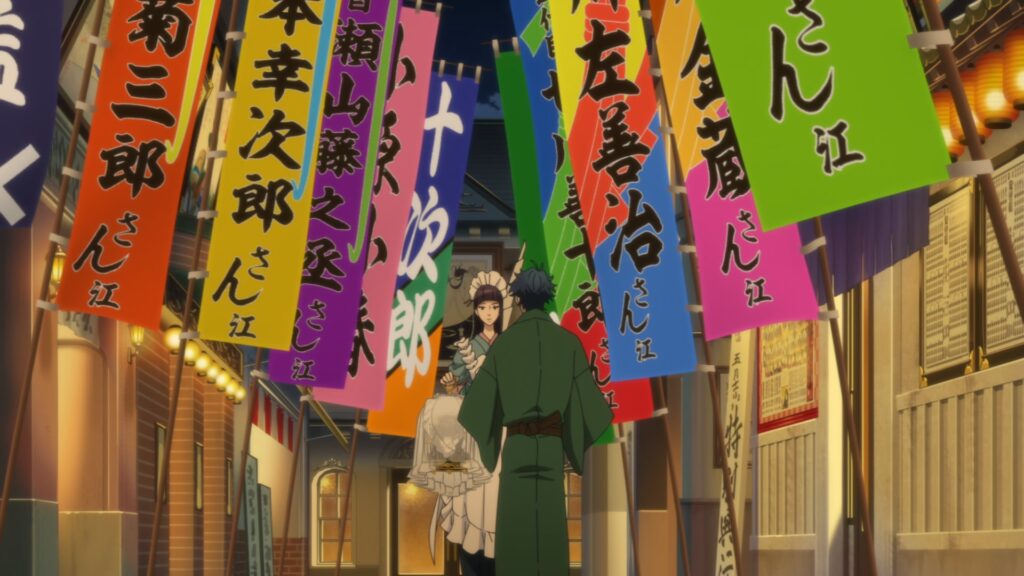
Two episodes of this season’s Undead Girl Murder Farce have aired, and one aspect of the show has been largely overlooked in English discussion: the show’s connection to rakugo and Japanese theater in general.
You may know that the anime is directed by Shinichi Omata, who previously helmed Showa Genroku Rakugo Shinju. It’s clear that his experience there must have been one of the reasons he was chosen here, and is helping elevate this element of the show.
As an experiment, I searched Twitter for the show’s title or hashtags + “rakugo”. In English, I could only find mentions of Rakugo Shinju. In Japanese, however, that only accounts for a small fraction of the results since airing – the great majority of the comments are about lowercase ‘r’ rakugo. Here is why that is.
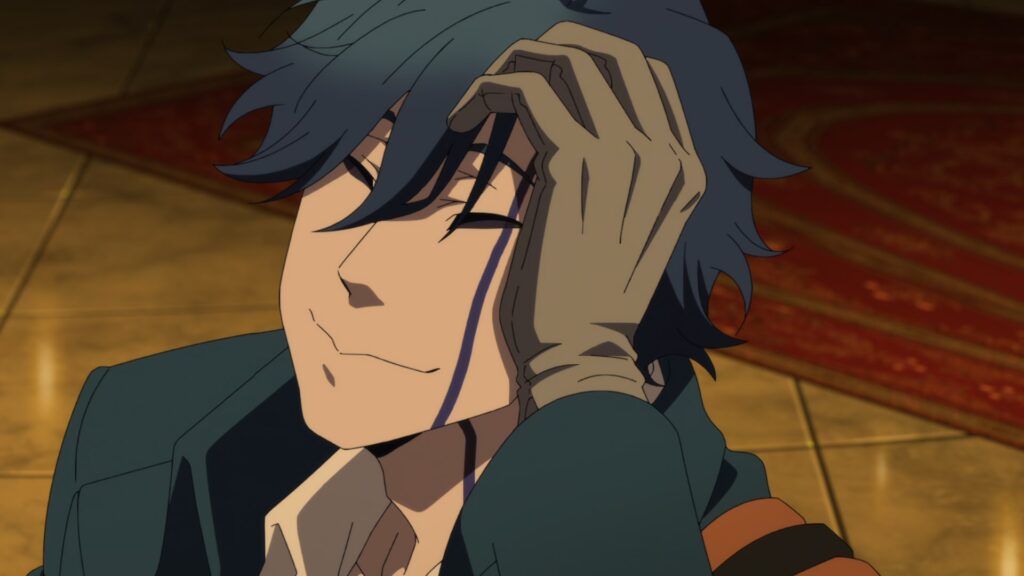
Exchanges in the show are very evocative of rakugo. The back-and-forths are written in a rakugo-esque manner and delivered in the tempo and cadence of a rakugo act. Shinuchi and Rindou are constantly trying to make each other laugh with jokes that feel out of a rakugo routine.
The way Shinuchi speaks especially always feels like it’s got the intonation of a rakugoka (rakugo performer) and that’s intentional. Shinuchi’s voice actor, Taku Yashiro, said in an interview with the site GetNews that he listened to a wide variety of rakugo performers to prepare for the role of Shinuchi.
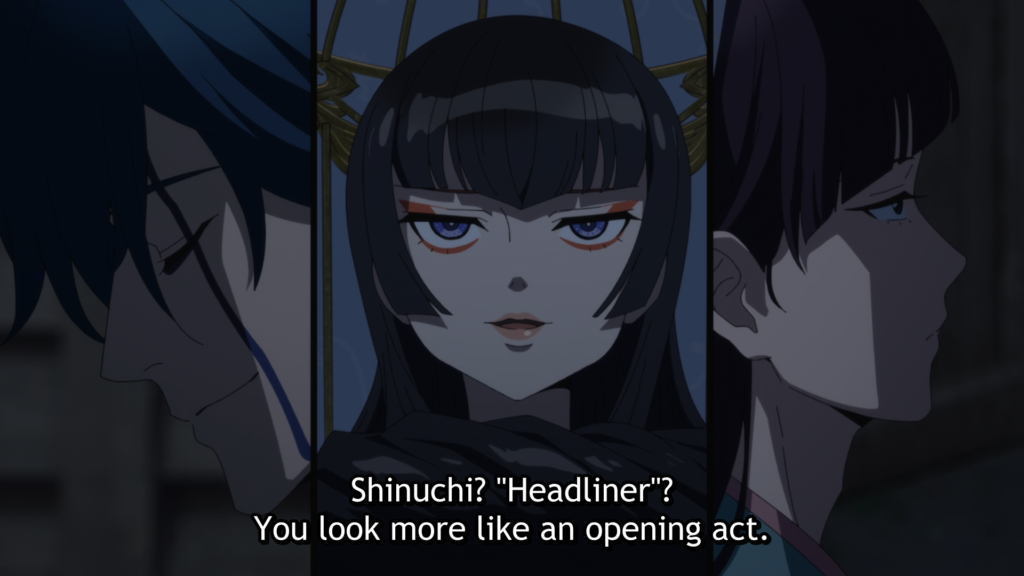
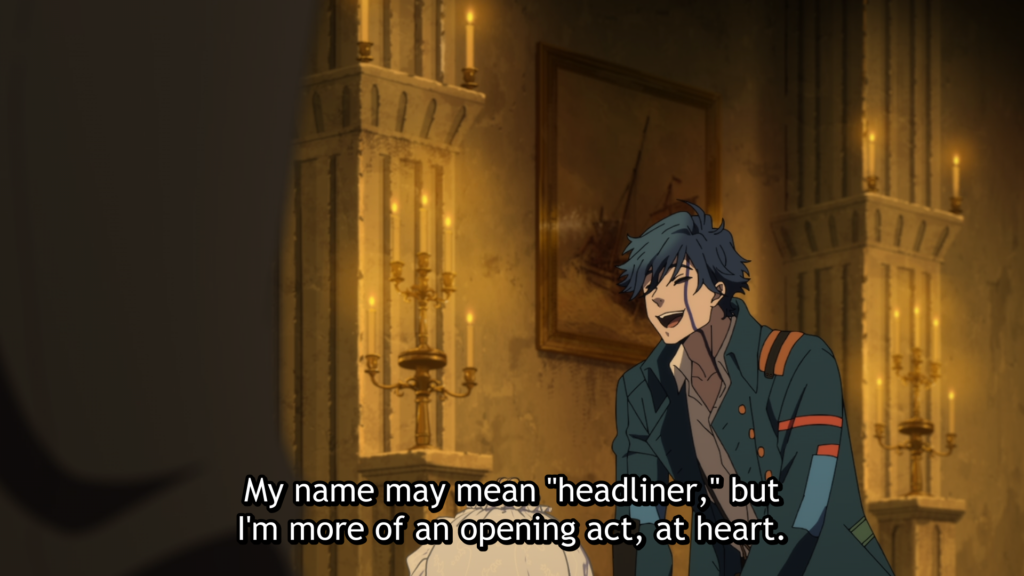
There’s a running gag in reference to rakugo about the protagonist’s name in both episodes so far. Translated as the headliner, shin’uchi is the highest rank a rakugoka can achieve, denoting them as a master. Below the shin’uchi is the rank of futatsume, and at the bottom of the hierarchy are the zenza, translated as “opening act”.

Let’s rewind a bit. When the show begins, we see Shinuchi would like to consider himself a performer, but to the troupe leader he’s just another one of the monsters. However, as the Oni Slayer, whose unfortunate job is to kill the “monsters”, he doesn’t have a place among the youkai either, as we see when the rokurobi comes in and spits on him. His plight is mirrored later with the stray cat the townsfolk are treating as a monster and requesting him to kill, which he refuses.
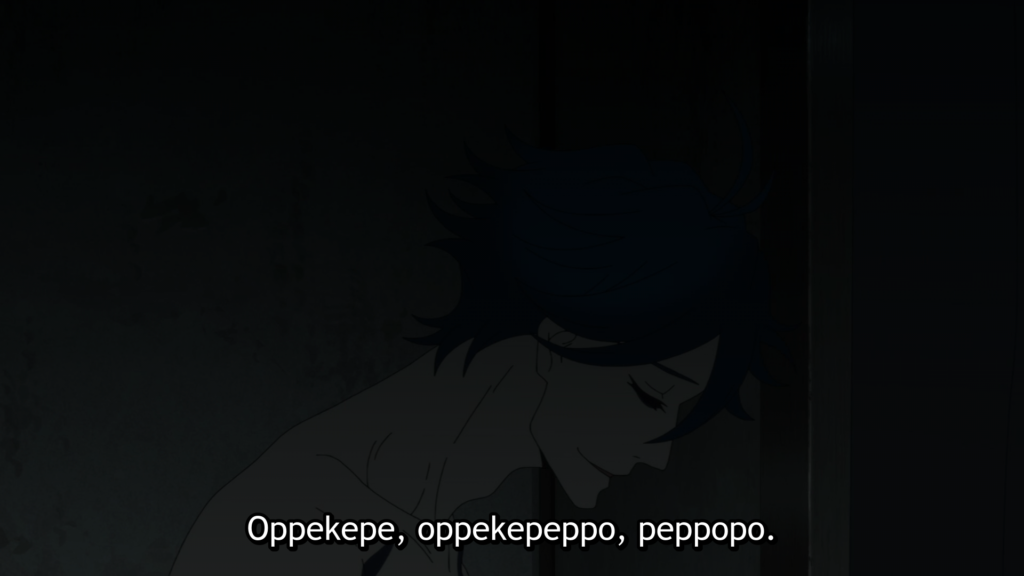
Twice after his act, Shinuchi sings quietly to himself. He’s singing the Oppekepe verse, a hit song from the Meiji era criticizing the government and the elite. It was written by the rakugoka Katsura Tobei III and popularized by Kawakami Otojirou, the disciple of another rakugoka, and founder of shinpa theater. This highlights both his desire to be a real performer and his disdain for his bosses and the audience that comes to watch the Oni Slayer.
Shinuchi receives two visitors who have been observing him and are aware of his condition. He’ll die soon, but as an immortal, the talking head Aya Rindou has the means of extending his life. In exchange, she wants him to use his half-oni ability to kill her.
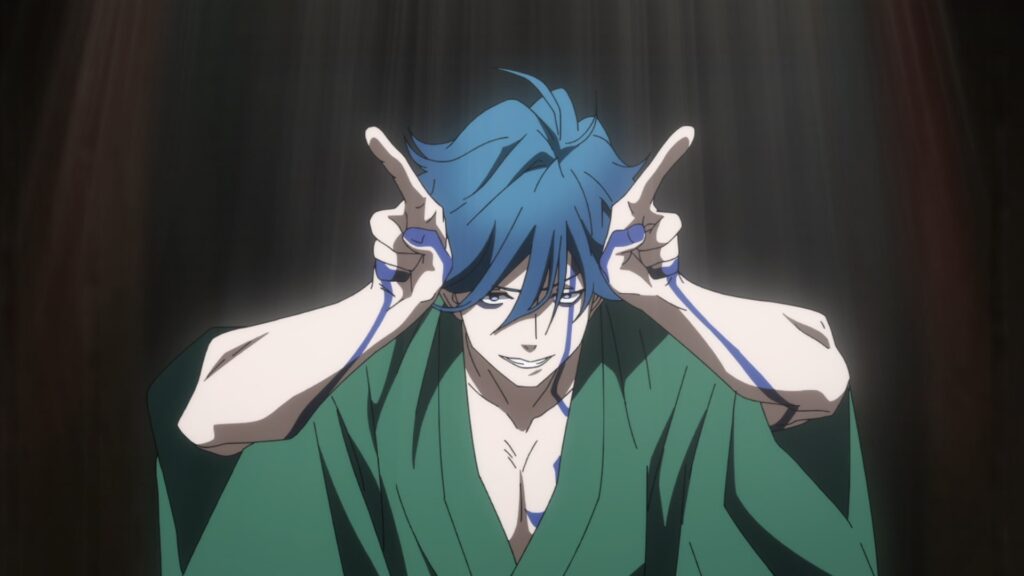
As he walks away from his troupe with them, Tsugaru Shinuchi, who until then had only been referred to as Onigoroshi (Oni Slayer), tells them his real name, prompting the aforementioned zenza joke in response. He narrates what had been his “entertaining” plan for death, depicted in the show as a theatrical performance.
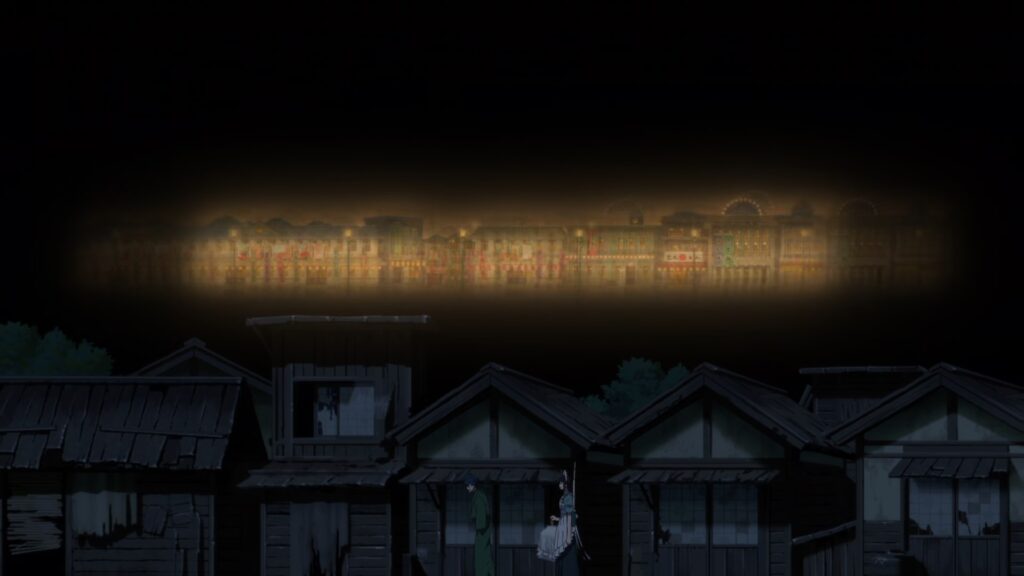
As Rindou asks him once again for him to use his half-oni powers to kill her, because there is nothing fun about living as a severed head, the image of a bustling entertainment district starts being projected over the decrepit town.
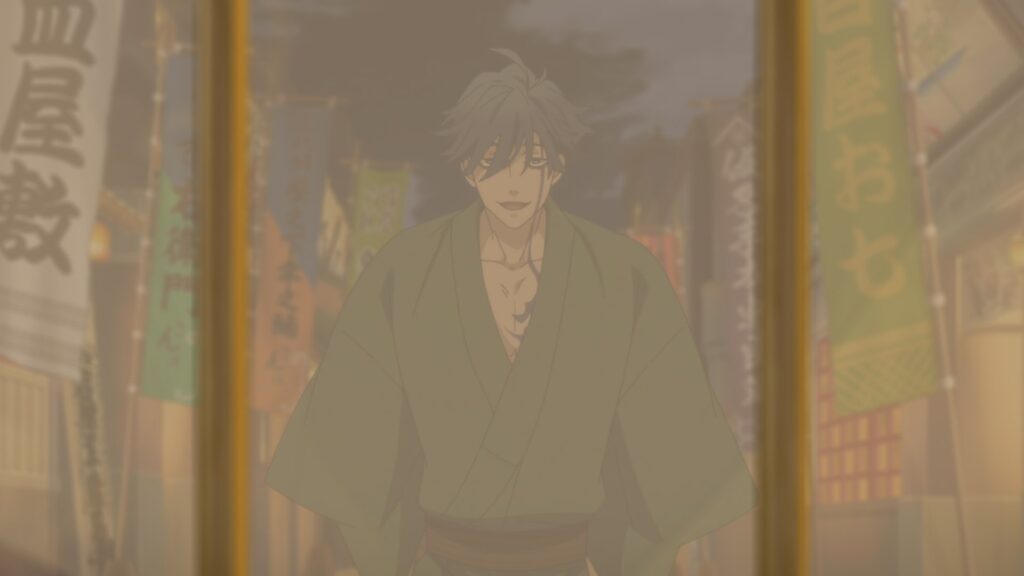
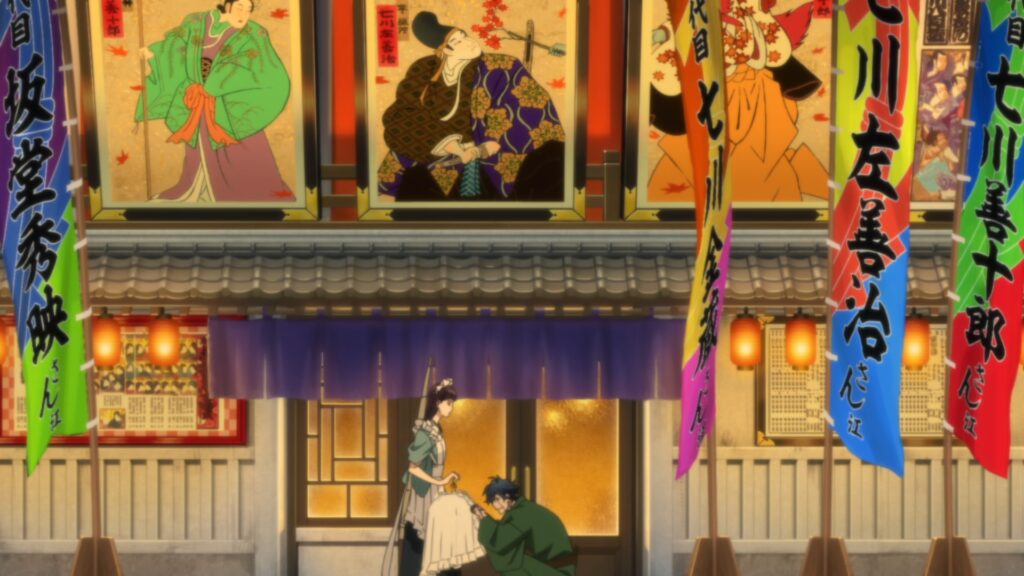
The projection takes over and Shinuchi gives her a counter-proposal: he’ll help get her body back instead. This happens inside a metaphorical theater street, marking a turning point in their lives. He no longer has to be a circus monster hurting others, he’s reached a place where he can be the performer he’s always longed to be, performing for Rindou. They now share a goal and can have the fun she thought was out of reach together. The stage is set for the Oni Slayer to become The Birdcage User.
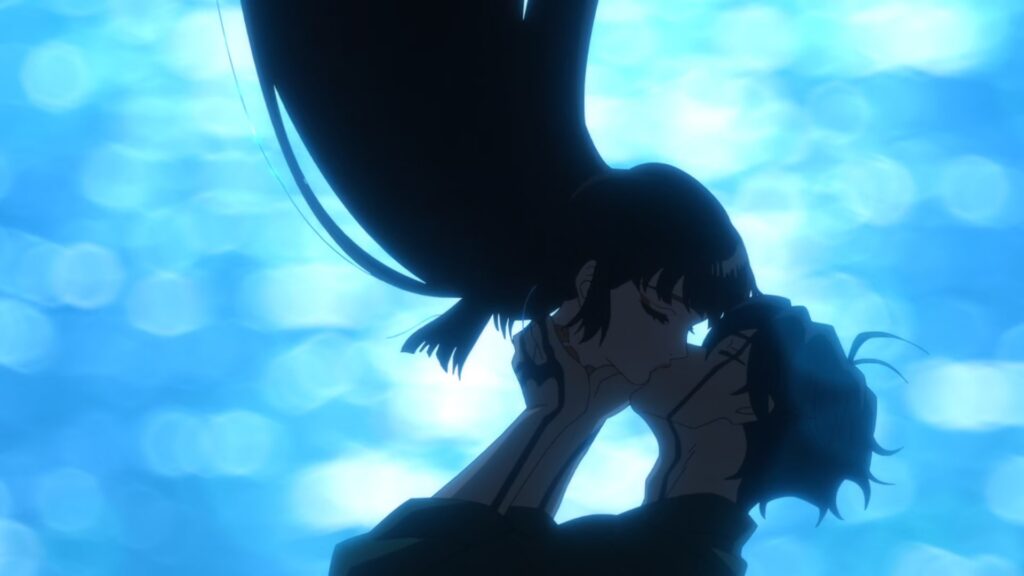
Shinuchi and Rindou’s meeting in the first episode could be said to be like a kaidan-banashi (rakugo story dealing with ghosts, youkai, or supernatural phenomena), as could the show as a whole in a sense. However, I also feel like their meeting could also fit a different, maybe less obvious genre: ninjo-banashi (sentimental rakugo stories). While those usually star ordinary townsfolk in stories of love or other topics, the first episode’s story presents a touching conclusion where Shinuchi and Rindou, who had been seeking their deaths, both decide to keep on living with each other’s help.
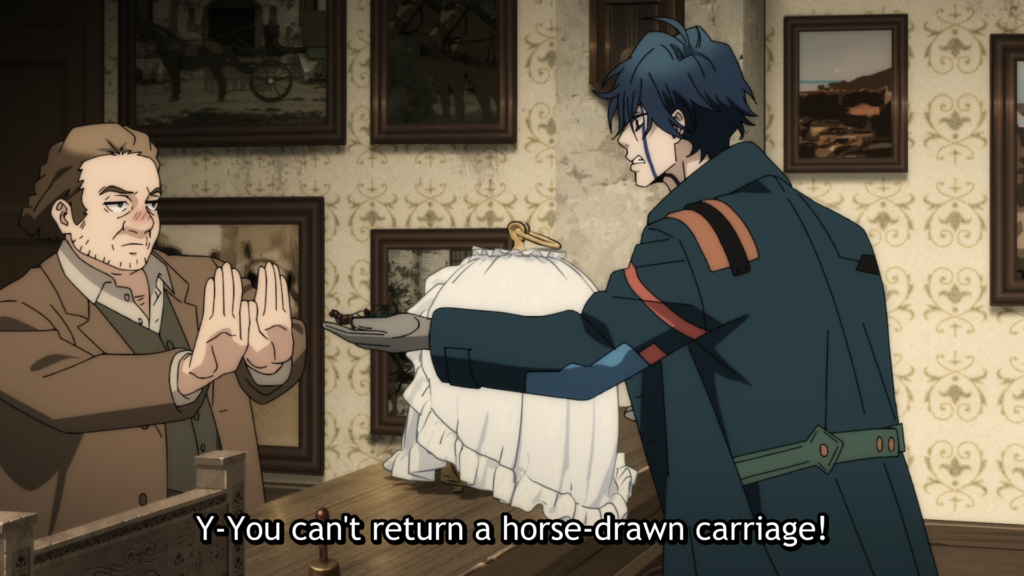
Meanwhile, the conversation between Shinuchi and the carriage driver in episode 2 feels much like the common kokkei-banashi (comical rakugo story), many of which feature characters trying to come out on top through an absurd scheme, and often with regards to money. Some classic examples of stories like that are Scary Manju (Manju Kowai), Time Soba (Toki Soba), and Cat’s Bowl (Neko no Sara).
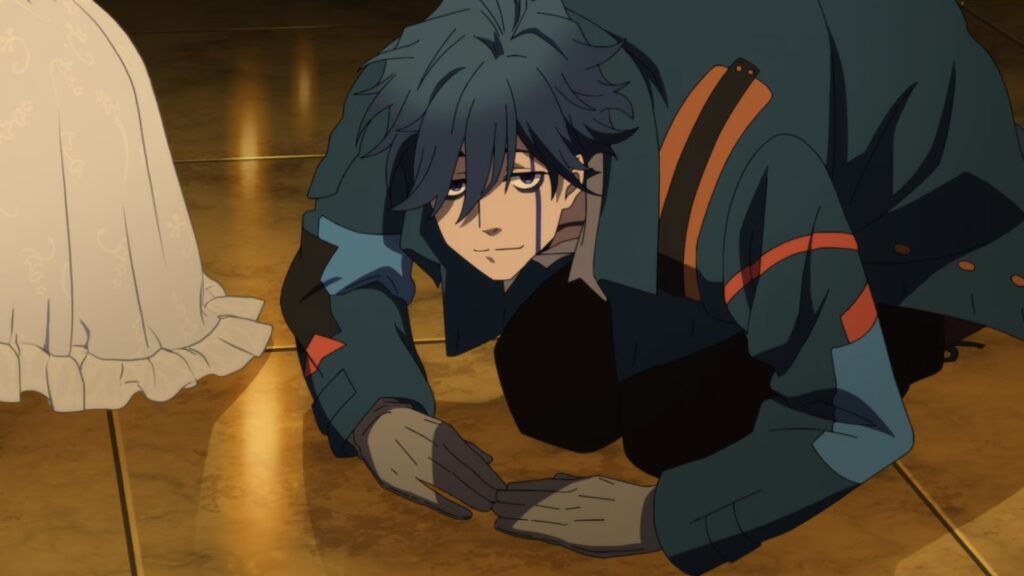
When Shinuchi is greeting Lord Godard, he bows on the floor exactly like how every rakugo performer begins and ends their act. His self-introduction, which includes the gag about his name, feels reminiscent of a makura, the prelude of a rakugo act.
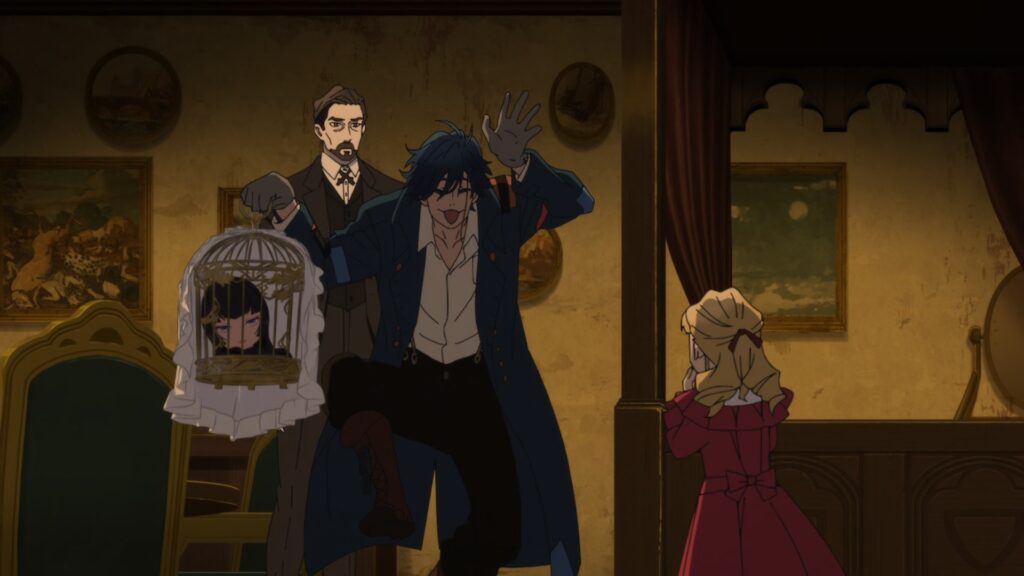
The references to classical Japanese theater are actually not limited to rakugo, however. At the end of the second episode, Shinuchi ends up in a pose that reflects a roppo, or stylized exit, from kabuki theater. (Special thanks to my friend Mouse who helped me look into this.)
The episode ends with him stomping the ground, making a clacking sound (tsuke) like that of a tsukeita, adding emphasis to the end in a very theatrical way.
A farce is a type of play, after all.
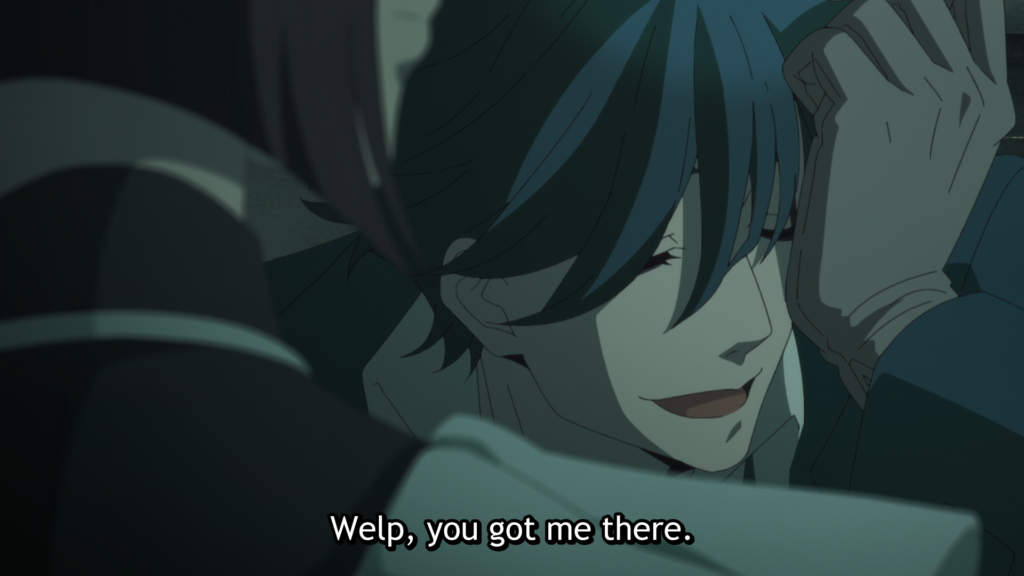
I have to admit I am not the most qualified person to write about this. While I always try checking out anime, manga and dramas about rakugo, and watch translated or English performances of rakugo I come across, I’m no expert on the topic. However, I felt I had to shine a light on this underappreciated aspect of this great show when I couldn’t find anyone else talking about it.
If you know of anything I’ve missed, or of any mistakes I’ve made, please leave it in the comments! In the process of researching for this post, I learned a lot that I didn’t know before and I’d like to learn even more. More connections to rakugo are sure to come, so this might be a topic worth revisiting as well.
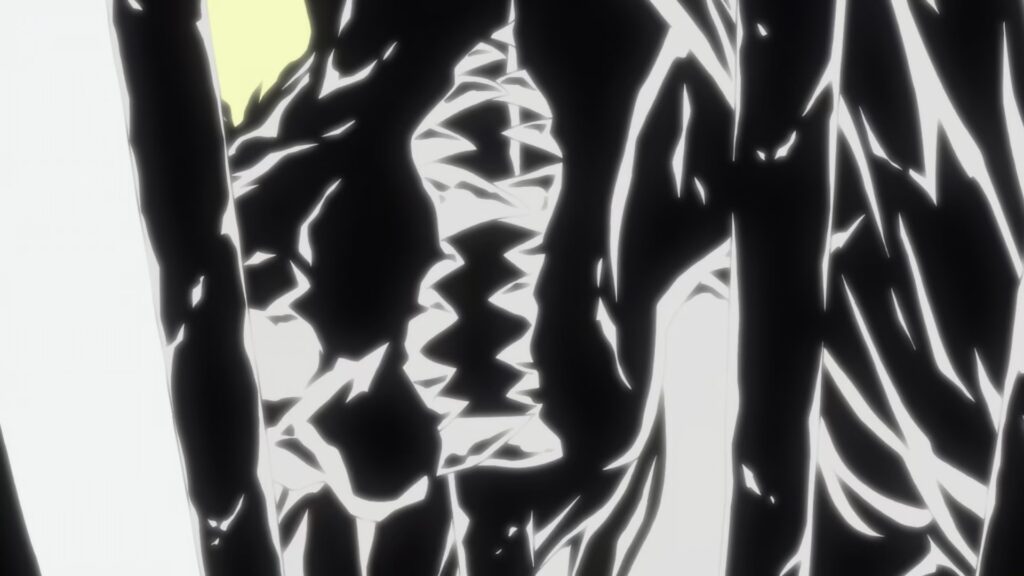

Amazing, thank you so much for sharing this information. This show has so many layers and I love it.
i noticed the rakugo cadence and shin’uchi’s name but didn’t know enough about rakugo to draw other connections, so went desperately googling for someone else who might have written about it. thanks so much for this comprehensive and interesting post!